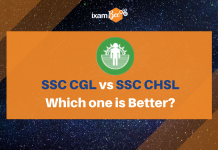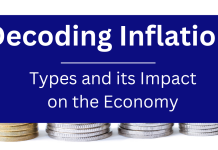What is World Autism Awareness Day?
The goal of World Autism Awareness Day is to raise awareness about people, particularly children, with autism. There is also a hope for increasing the global awareness of autism and disseminating information about the importance of early detection.
Autism affects men and women of all races and nationalities in every country. It has a particularly negative impact on children and is extremely widespread. This is why increasing autism awareness is so important.
April 2 is World Autism Awareness Day. Did you know that CDC (Centers for Disease Control and Prevention) statistics revealed that autism spectrum disorder (ASD) is 4.3 times more prevalent in boys than it is in girls? This is because girls “often go undiagnosed because they don’t fit autism stereotypes and they mask symptoms better than boys do,” according to the Child Mind Institute, New York. There is no better way to celebrate this day than by becoming aware of the characteristics of people with this condition and how all of us can do better to increase our understanding and promote kindness.
On April 2, we have commemorated World Autism Awareness Day since 2007, when we honor the achievements and accomplishments of people with autism. During this time, many schools and autism awareness organizations host events to raise autism awareness and understanding.
The day is one of the seven official health-specific UN Days.
In 2014, Autism Awareness Day fell on the same day as the National Autistic Society’s Onesie Wednesday event. The charity encouraged everyone to wear onesies on this special day to raise awareness and spread the message that it’s okay to be different.
What causes Autism?
Many genetic mutations have recently been linked to autism with the results revealing that there are over 100 autism risk genes. However, most cases involve a complex mix of genetic and environmental factors.
What is the theme for World Autism Awareness Day?
Every year since 2012 the UN has given a theme as we celebrate World Autism Awareness Day. So far, these are the themes that have been celebrated:
- 2012 – Awareness Raising
- 2013 – Celebrating the ability within the disability of autism
- 2014 – Opening Doors to Inclusive Education
- 2015 – Employment: The Autism Advantage
- 2016 – Autism and the 2030 Agenda: Inclusion and Neurodiversity
- 2017 – Toward autonomy and self-determination
- 2018 – Empowering Women and Girls with Autism
- 2019 – Assistive Technologies and Active Participation
- 2020 – The Transition to Adulthood
In 2021, the UN has chosen Inclusion in the Workplace: Challenges and Opportunities in a Post-Pandemic World.
History of World Autism Awareness Day
Autism Spectrum Disorder is a developmental disorder that affects a person’s ability to navigate social interactions and causes repetitive and restricted behavior.
The term “autism” was first used in 1911 by psychiatrist Eugen Bleuler, who used it to describe a specific cluster of symptoms that were previously thought to be simple symptoms of schizophrenia, such as extreme social withdrawal.
In that order, pediatric psychiatrist Dr. Leo Kanner described autism as a social and emotional disorder in his article “Autistic Disturbances of Affective Contact” in 1943, and Hans Asperger published his “Autism Psychopathology Article” in 1944, describing autism as a disorder affecting children of average intelligence who have difficulties with social and communication skills. These articles contributed significantly to the research that led to the classification of Autism as a distinct disorder from schizophrenia in 1980.
With the unending investigation and research into autism, the “United Nations General Assembly” established World Autism Awareness Day on April 2 of each year in “Resolution 62/139” on December 18, 2007, to encourage member states to take action in raising awareness about people with autism spectrum disorder and to support research finding new ways to improve wellness and inclusion.
Finally, in the fifth edition of the “Diagnostic and Statistical Manual of Mental Disorders,” the “American Psychiatric Association” developed the concept of autism as a spectrum in 2013, combining all subcategories of autism and related conditions into one unified category, including varied characteristics, severity, and presentation of the symptoms.
Traditions of the Day
World Autism Awareness Day commemorates those who have been affected by the disorder and raises funds for autism-related causes. School-aged children are taught about autism and encouraged to accept it. Peers must be tolerant and accepting of autistic children because they are bullied. Adults (especially parents) are educated on the subject because the signs of autism are not always obvious. Businesses and shopping malls in the area are also committed to raising autism awareness by donating a portion of their profits to autism-related causes and organizations.
What do the numbers say?
- 1 in 59 – the number of children diagnosed with an autism spectrum disorder in 2018
- 1 in 34 – the number of boys diagnosed with ASD in 2016 according to data collected by the CDC
- 1 in 145 – the number of girls diagnosed with ASD in 2016 according to data collected by the CDC
- 4 – the age after which most children are diagnosed with ASD
- 31% – the percentage of children with an intellectual disability due to ASD
- 2-18% – the percentage of chances of parents having a second child with ASD after the first one
- 36-95% – the percentage of chances that if one child has autism in a pair of twins, the other will be affected as well
- ½ – of the total number of children with autism typically wander or ‘bolt’ from a safe setting if something catches their interest
- 28% – the percentage of children with ASD who have self-harm behavior
- ⅔ – of the total number of children with autism face severe bullying
- 1 in 160 – one in 160 children suffer from ASD today
Autism Colors and Symbols
- The Autism Ribbon
The puzzle piece ribbon, which can be found as a pin, bumper sticker, or on T-shirts, is perhaps the most well-known symbol of the month. The Autism Society created the ribbon in 1999, and it has since become the universal symbol for autism awareness.
“The puzzle pattern reflects the autism spectrum’s complexity. The various colors and shapes represent the variety of people and families affected by the disease. The bright color of the ribbon represents hope — hope that people with autism will be able to live full lives and interact with the world on their own terms as a result of increased autism awareness, early intervention, and access to appropriate services and supports.
- The Rainbow Spectrum
A rainbow of colors has often been used to visually represent the range of autism symptoms and individuals with autism’s abilities and challenges, which is most closely linked to the concept of the autism spectrum. The puzzle piece logo, the infinity symbol, or the ribbon are frequently used in conjunction with this rainbow spectrum.
- Light it Up Blue
You may notice a lot of blue being worn to raise autism awareness. The autism advocacy group Autism Speaks is responsible for the color blue’s association with autism. People are encouraged to wear blue to raise autism awareness as part of their “Light it Up Blue” campaign. For people on the spectrum, blue is also the organization’s primary color, and it is associated with a calm feeling and acceptance in an otherwise noisy and busy world.
- The Puzzle Piece
The puzzle piece is another common symbol for autism that was popularised by Autism Speaks. Its use has sparked both positive and negative reactions, as many people on the spectrum today believe it is too closely associated with the idea that people with autism “don’t fit in” with societal expectations and social circles. The color blue or a rainbow spectrum is frequently associated with the puzzle piece.
- The Butterfly
The butterfly has been proposed as a replacement for the puzzle piece because it inspires thoughts of change and symbolizes the beauty of diversity and continued development. Many people today see it as a symbol of the beauty of seeing things from a different perspective and the importance of continuing to grow.
Also Read:
Good Friday 2021: Know The Significance here!
Get Free Online Test Series, GK updates in form of Beepedia, BeeBooster, as well as latest updates for Bank PO, Bank Clerk, SSC, RBI, NABARD, and Other Government Jobs.












